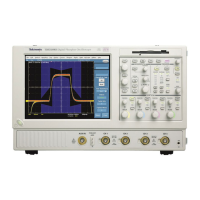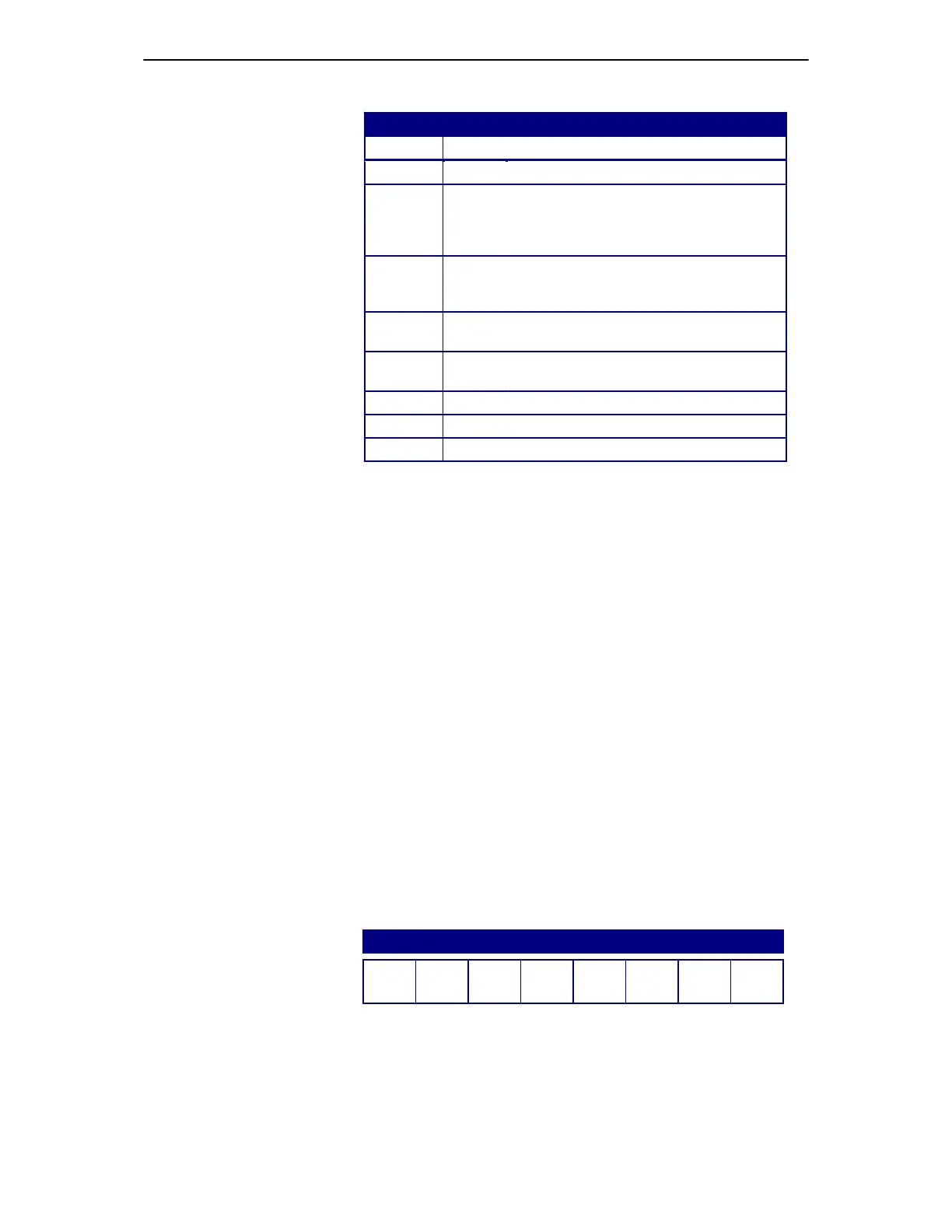TDS5000B Online Programmer Guide
-- 8 5 3 --
SBR Bit Functions
Bit Function
7 (MSB) -- -- -- -- -- -- -- Not used.
6 RQS
Request Service. Obtained from a serial
poll. Shows that the oscilloscope
requests service from the GPIB
controller.
6 MSS Master Status Summary. Obtained from
*STB? query. Summarizes the ESB and
MAV bits in the SBR.
5 ESB
Event Status Bit. Shows that status is
enabled and present in the SESR.
4 MAV
Message Available. Shows that output is
available in the Output Queue.
3 -- -- -- -- -- -- -- Not used.
2 -- -- -- -- -- -- -- Not used.
1–0 -- -- -- -- -- -- -- Not used.
Enable
DESER, ESER, and SRER allow you to select which events are re-
ported to the Status Registers and the Event Queue. Each Enable Regis-
ter acts as a filter to a Status Register (the DESER also acts as a filter to
the Event Queue) and can prevent information from being recorded in
the register or queue.
Each bit in an Enable Register corresponds to a bit in the Status Regis-
ter it controls. In order for an event to be reported to a bit in the Status
Register, the corresponding bit in the Enable Register must be set to
one. If the bit in the Enable Register is set to zero, the event is not re-
corded.
Various commands set the bits in the Enable Registers. The Enable
Registers and the commands used to set them are described below.
The Device Event Status Enable Register (DESER) -- This register
controls which types of events are reported to the SESR and the Event
Queue. The bits in the DESER correspond to those in the SESR.
Use the DESE command to enable and disable the bits in the DESER.
Use the DESE? query to read the DESER.
Device Event Status Enable Register (DESER)
7 6 5 4 3 2 1 0
PON URQ CME EXE DDE QYE RQC OPC
The Event Status Enable Register (ESER) -- This register controls
which types of events are summarized by the Event Status Bit (ESB) in
the SBR. Use the *ESE command to set the bits in the ESER. Use the
*ESE? query to read it.

